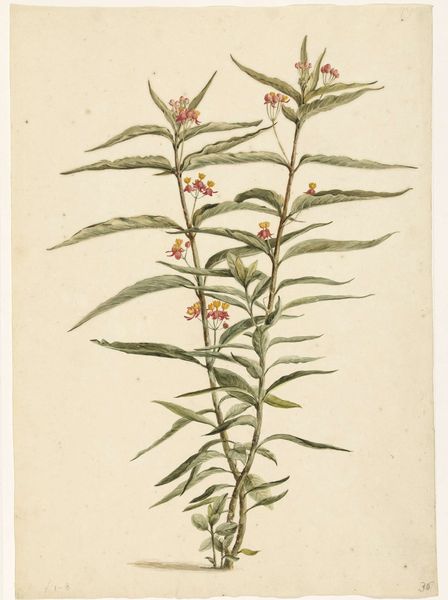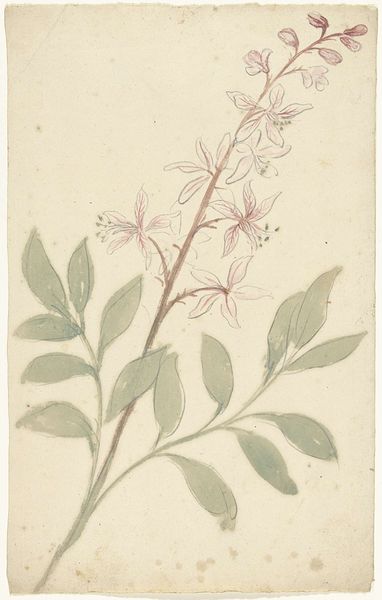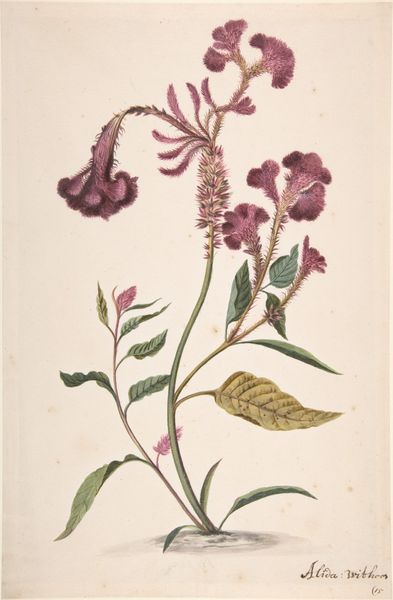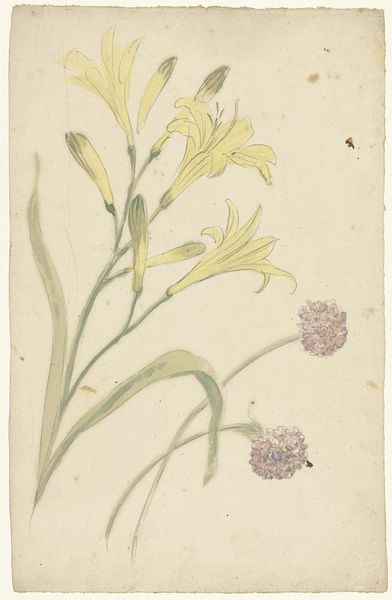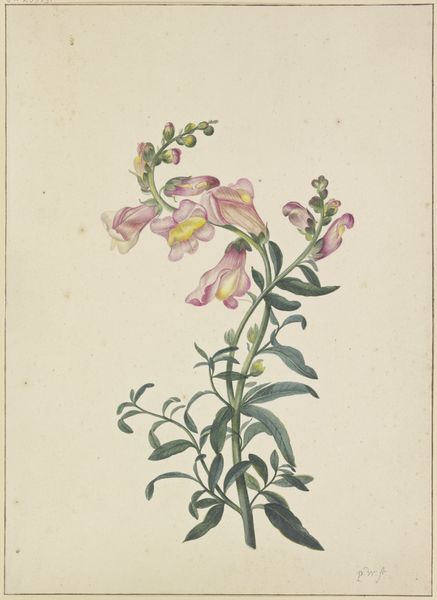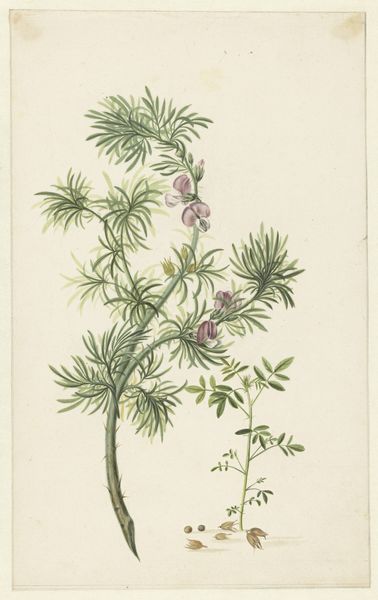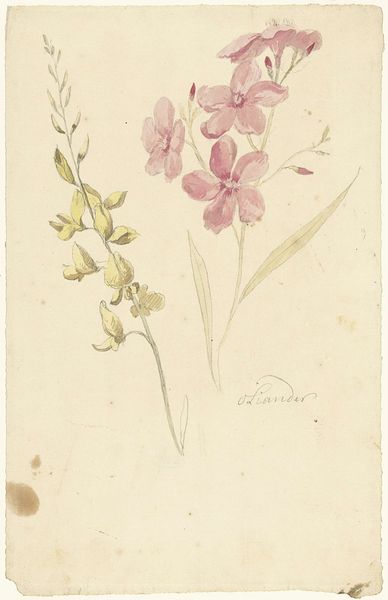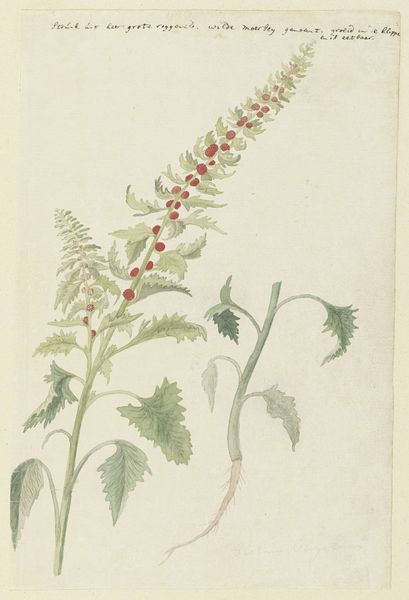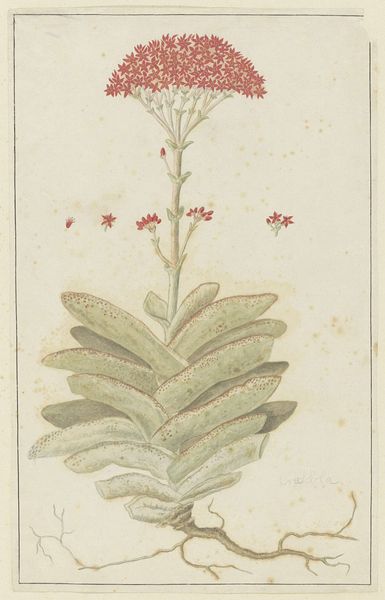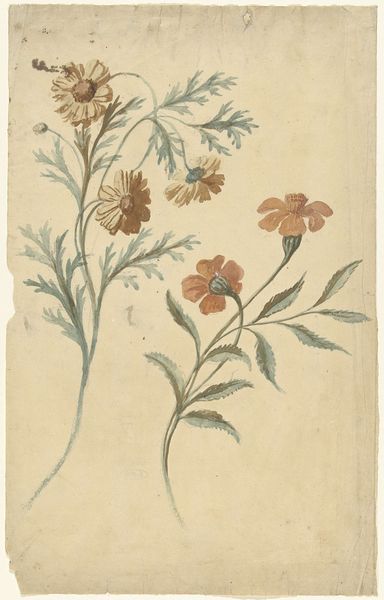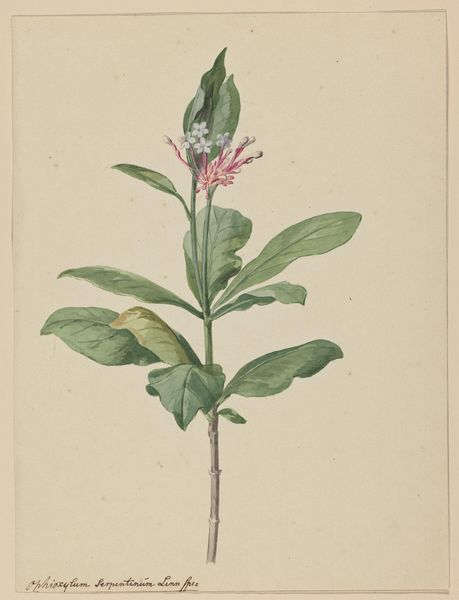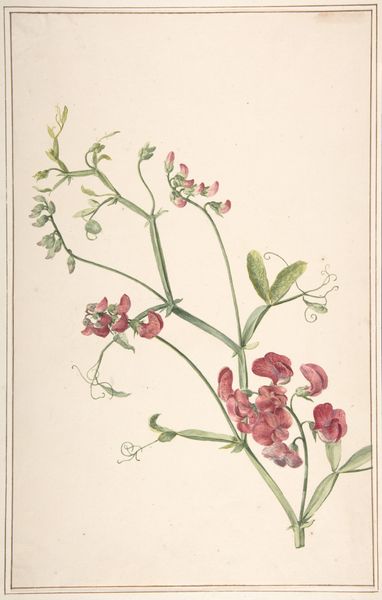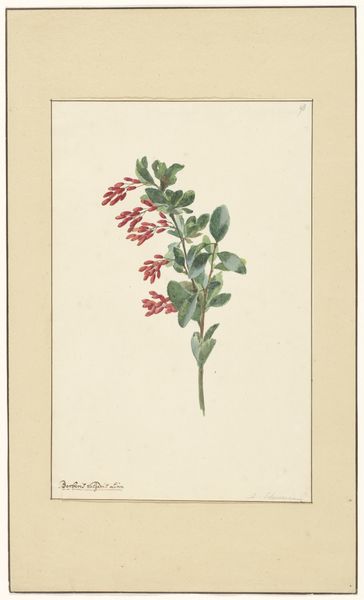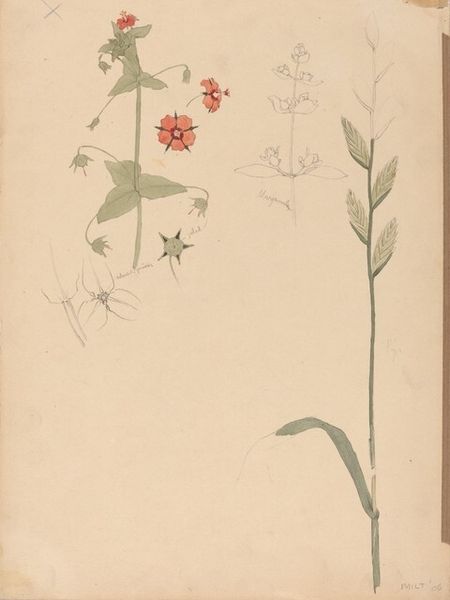
drawing, painting, paper, watercolor
#
drawing
#
baroque
#
dutch-golden-age
#
painting
#
paper
#
watercolor
#
botanical drawing
#
botanical art
#
watercolor
Dimensions: height 328 mm, width 207 mm
Copyright: Rijks Museum: Open Domain
Editor: Here we have "Balsemien," a watercolor and ink drawing on paper, created sometime between 1677 and 1755 by Elias van Nijmegen. It’s delicate and seems to capture a specific plant specimen. What stands out to you? Curator: The visible signs of the handmade, of process, intrigue me. Notice the paper itself, stained and aged, and how that contrasts with the fragile, deliberately placed washes of color. This challenges our usual notions of fine art; it seems less concerned with idealized beauty than with a sort of recording, almost industrial, function. Editor: Recording, as in scientific illustration? Curator: Perhaps. But think also about the labor involved. This wasn’t simply a moment of artistic inspiration, it was time spent carefully rendering, observing, using specific, costly materials – paper, pigments. Who commissioned such work, and for what purpose? Was it about scientific advancement, colonial exploration, or the display of wealth? The paper's surface has imperfections; what story could the pigments themselves tell about trade routes and availability? Editor: So, it's not just a pretty picture of a flower, but a document of its time? Curator: Exactly! Think of the botany craze of the Dutch Golden Age. Depicting flora and fauna was tied to exploration, commerce, and the rise of the merchant class. This seemingly simple drawing points towards complex networks of production, consumption, and power. Consider the labour it took to produce each individual sheet of paper during the period and the significance of mass manufacture following its increased use. Editor: I never considered how the materials themselves could hold so much meaning! I'm starting to see the piece, not just as art, but as an object embedded in a specific time and place, reflecting those material conditions. Curator: Precisely. It forces us to question the boundaries we impose on "art" and to consider the social and economic forces that shape its very existence.
Comments
No comments
Be the first to comment and join the conversation on the ultimate creative platform.
